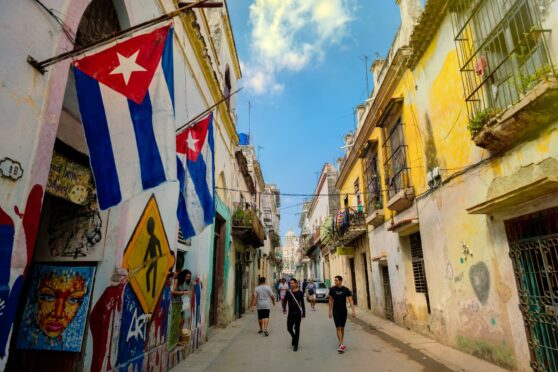Since 1 July, Cuba has started welcoming tourists once more. However, restrictions are in place in certain regions. Travellers are only welcome on the following islands: Cayo Largo, Cayo Coco, Cayo Guillermo, Cayo Cruz and Cayo Santa Maria.
So while it is theoretically possible to travel to Cuba, there are a few things you need to keep in mind:
Cuba and Tourism
Cuba is a country unlike any other. Tourists who visit the island often report feeling like they went back in time. The classical cars found at virtually every corner certainly do much in that regard. In Cuba, you have the feeling that the sands of time have stopped; the buildings are old and the internet connection is often very slow. However, this rustic atmosphere is in fact one of the country’s major draw points. Cuba is attracting more and more tourists each year. The island is still roughly the same as decades ago and does not yet have mass tourism such as in the United States, although things are changing. People want to take advantage of Cuba’s current state before it inevitably changes into a more modern country to accommodate its rapidly growing tourism industry. In 2019, Cuba welcomed almost 5 million visitors, making it one of the biggest sectors in the country, and a prime source of income for the government.
Currency
Cuba used to have two currencies: the CUC and the CUP. The local population mainly used the CUP (Cuban Peso) while tourists had their own unique currency, the convertible peso (CUC). However, on 1 January 2021, the tourist CUC was abolished. Today, the only currency you can pay with in Cuba is the original Cuban Peso, or simply peso for short. It is recommended exchanging CUP at the airport or at one of the exchange offices. The CUP is indexed to the US dollar. In the past, there were places that did not accept CUC’s, such as restaurants, so tourists always had to carry both forms of currency. This hassle has thankfully been remedied.

Applying for a visa
Cuba has a mandatory visa requirement for foreign tourists. This visa can be applied for at the embassy of Cuba, but also online. This is a far easier option, especially for those who live far from the embassy or simply do not have the resources to make the trip. The Cuba visa is a paper document. When travellers receive the visa, they can fill it in themselves. Your personal information has to be written on both the right and the left part. You are required to hand in the right part upon arrival and the left part upon departure. As it is not necessary to write the arrival date on the visa card, the Cuba visa can be applied for at any time.
To be able to use the Cuba visa, travellers must meet a number of conditions. First, they can only stay in Cuba for up to 30 days. However, it is possible to extend the visa in Cuba, for a maximum stay of 60 days in total. Furthermore, the passport must be valid for at least seven months on the day of arrival in Cuba. Travellers are also not allowed to work in Cuba.
Finally, each traveller must apply for an individual Cuba visa, so this includes any children travelling along. They cannot be included in their parents’ visas.
To find out more about travelling to Cuba and applying for a visa, click here to be taking to the e-visa website.










